

Pages in this Folder:

Related Folders:
See also Department Site Map
Support Provided by

Toronto Parks and Trees Foundation
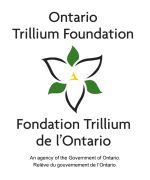
This website has received support from celos.ca through the Trillium foundation.
Publications
Comments?
For the basics, see
- Website & Privacy Policies
- How To Get Involved
- The Role of the Park
Search options:
Department Site Map
Related sections:
- Working With The City A synopsis
- Breastfeeding and Human Rights, 2005
- Budget Crisis 2004
- The Inspector Crisis, 2003
Custodians:
posted October 17, 2005
Michael Monastyrskyj, a park user and neighbour, asks a good question: Whose park is it, anyway?
August 18 2005, from Nadya Burton:
"I was at the park the other day - and I was just so struck (as I usually am when I am there) by how this park makes people's lives better. My kids spent two hours mixing cob and helping build the house... and then ate healthy good food, swam, played basketball (with the two new nets), ate lunch in the quiet of the yurt... I got to drink coffee... the whole thing is amazing. I really wanted to tell you that the park makes people's lives better, brings community together, supports parents and caregivers, and has managed not to turn into a purely yuppy destination, really seeming to meet the needs of the diverse community that lives in the neighbourhood. Anyway, I just felt moved to tell you, because one can fall into taking it a little for granted, that I feel tremendously privileged to live close to the park, and truly blessed that my family has access to all the things that happen there..."
September 12 2005, from Michael Monastyrskyj:
"I live closer to Lansdowne than to Dufferin or Havelock. I grew up in the Bloor-Lansdowne area and I have been using Dufferin Grove Park since I was a kindergarten student at Pauline Avenue Public School forty years ago. I'm not a park volunteer, but I am a city resident and given my personal history I have every reason to consider Dufferin Grove my park.
Sometimes, however, I get the impression that the people who live closer to the park than I do consider Dufferin Grove their private bailliwick. To be blunt about it, when I read messages posted to this list I often feel like I am outside the "park community" because I live a few blocks further from Dufferin Grove than many of the other people here. To help clarify things, let me ask a couple of questions. When people talk about the Dufferin Grove Park community, who do they mean? Is it only people who live within a few blocks of the park or is it everybody who uses the park? Who counts as a neighbour? Who counts as a stranger? When I visit the park, am I a stranger in someone else's park or am I a neighbour using a publicly-owned facility equally accessible to all residents of Toronto?
I think these are important questions because from time to time disagreements with the Parks Department over park policy are framed in terms of "the community" vs. the City. When park policy is discussed and debated, who is considered part of "the community" and who is considered an outsider? Do some voices count more than others based on proximity to the park? And for that matter, should the opinions of those with the time and inclination to volunteer at the park count more than the views of other people whose taxes support this city-owned public facility?
I think all taxpayers who use the park should have an equal say, within the limits of practicality, in what goes on there. I have concerns about any arbitrary division between "neighbours" and "strangers". Obviously this distinction makes sense when talking about personal relationships, but it seems out of place when talking about municipal policy. I believe that as far as practical the Parks Department must take into account the needs of the silent majority of park users who don't have the time or interest to build yurts and cob walls or attend Friday night suppers that only cater to a minority of park users. The park belongs to all of us EQUALLY."
September 13, 2005, response to Michael Monastyrskyj, from Georgie Donais:
"So if I understand you right, you're feeling a bit concerned when you hear talk of "neighbourhoods" and "local" in reference to Dufferin Grove Park, because you place a high value on inclusion, and want everyone to feel at home at the park, regardless of where they hail from.
Are you worried because you want consideration that not everyone has the time or inclination to volunteer or spend lots of time at the park or to take part in the activities there, but still want may to maintain a connection with the park?"
September 13, 2005, from Michael Monastyrskyj:
"Yes, Georgie. That's a good summary of what I was trying to say. That's my concern. I don't want to make too much of this. Dufferin Grove is a well-run park that benefits from the work that you, Jutta Mason and other volunteers put in. As a park user, I benefit from your efforts and am grateful for them. I just hope that when the city makes park policy, it takes into account the fact that there are a large number of other park users who also have a stake in what goes on at the park. I realize the city can't conduct a survey every time it makes a decision, but I hope city officials are aware that are many taxpaying park users who may not have the time or may not even know how to make their voices heard. I also hope that those who don't live in the immediate vicinity of the park aren't considered outsiders who don't belong. I don't see this as a big problem, but it's a concern."
September 13 2005, response to Michael Monastyrskyj, from Jutta Mason:
"Your version is the one that makes sense: all our parks are open to everyone. One glorious thing about parks is that they have no walls and so no one is kept out or charged a membership fee. Dufferin Grove Park is full of people who are strangers to me and to one another, and that shows it's a good place -- people come from all over.
Interestingly, the steady stream of park users who drop over to see the cob project or the ovens or the (weedy but colourful) gardens often mention that they come to the park because there's a "feeling of community."
I think this is code for something. People who come to live in a large city don't want to live in one another's pockets. They don't want the stifling sense that everybody knows their business. But they may want the sense that there is somewhere to connect if they should want to do that.
I prefer the term "regular" to the term "volunteers" to describe the people who give the sense of connection at Dufferin Grove (or any) park. Some people never do more park work than pick up a piece of trash here and there, but their regular presence, with their dog or their kid or their book or their sun lotion, is a boon to the park.
A park that has only regulars would be dreadful (a sort of mushy Disney/ Sesame Street fantasy). A park that has no regulars, no one who waves or nods or stops to chat, or shows signs of connection, would be pretty grim. I think the middle way is not bad, though.
If this feels like rationalization, come by sometimes. Let's argue (in a friendly way) about what a park should be. Lively conversations about public space and about how our taxes should be spent there are my hobby."
September 13, 2005, from Vivienne Smetana:
"Hi everyone: This discussion has raised some interesting issues. But perhaps I could go back to the beginnings of the discussion, the street fair. Initially, it was the Havelock Street Fair and focussed on the residents of that street and the activities took place actually on the street. However, once the activities got started anyone was welcome. I haven't been involved for a while but I gather over the years it has become more a part of the park and the general neighbourhood. The question that appears to be asked is whether it should now be publicized beyond those confines or not.
I think there is a difference between a local party/fair and a completely wide open one and there are pros and cons of both. A local event focuses on the immediate neighbourhood and the idea is for neighbours to get to know each other; to create a village feel in a city. It seems to me that a more widely publicized street event can often be a fund raising event or is possibly initiated as a way to attract more people from out of the area so they can discover the attractions of the host area. The Junction Art Event in September comes to mind as a way to show outside people what that area has to offer.
In terms of entitlement to use the park, it seems to me that many of the activities in the park have been open to all and widely publicized accordingly. Maybe a point to note is that these activities would not be happening at all if it was not for the dedication of close neighbours to the park like Jutta and others who have worked incredibly hard to create the gem of a park which we now have. I've lived in this neighbourhood for a long time and there certainly was not a great deal to attract people to the park before these changes. Now people come from all over the city to enjoy the facilities that the park has. Most certainly it's an inclusive park, definitely not exclusive.
May I also add that this work was done by volunteers and it is only natural that a bond is created between people who put the time in and work together. I know we don't all have the time to participate in this way or we volunteer our time to other causes, but we can certainly appreciate that we are fortunate to enjoy the benefits of the work of the park volunteers.
But back to the initial question! ... Do people feel the Street Fair is still the Havelock Street Fair which is open to the community but has just moved a few metres over into the Park or has it now become the Dufferin Grove Park Fair which is open on a much larger scale? As far as I am concerned, those people who put their energies into organizing the event should make this decision. No doubt they will take into account input from users of the park. Either way is fine by me. I am just thankful they are willing to do the work -- if they weren't we wouldn't have this issue to discuss!"
September 13, 2005, response from Gene Threndyle to Michael Monastyrskyj:
Michael you do raise an interesting point and living on Queen Street right beside Trinity Bellwoods I guess I'm not really a neighbour of Dufferin Grove Park. Yet I spend more time in Dufferin Grove than I do in Trinity Bellwoods.
I value the volunteer efforts in Dufferin Grove as something unique and beautiful. This is the creative energy that vibrant cities and communities are made out of. We all pay taxes so let's not get to caught up in that. If we do then the wealthy who pay the most property taxes but use public parks the least would have all the say.
You shouldn't feel like you have to volunteer but neither should you feel you have de-value the efforts of volunteers. As for having a say and silent majorities believe me short of an election style poll or plebiscite there is absolutely no way to determine what the silent majority thinks if they think anything at all. That could be why they are silent. (ha-ha) (joke)
If you feel that democracy involves trusting politicians that you vote for or don't vote for periodically and the minions at city hall then I suggest you read today's Globe and Mail. In the meantime why don't you just enjoy your park because it's one of the best in this blessed city."
Nov.26, 2006, an account from Michael Monastyrskyj:
I like to walk. Next to ice skating it's my favourite form of exercise. A typical Sunday afternoon for me is a walk to the library to read for a while followed by a walk to the park where I sit for a time before walking back home. Sometimes I read a paper. Sometimes I just sit and look around. Sometimes I chat with a stranger who is sitting nearby.
It was warm today so I went to the park. I was sitting at a picnic table drinking a cup of coffee when a guy on a bike stopped at the next table and pulled out a can of beer. He started chatting. The first thing he said to me was that his wife didn't like him to drink. He assured me he wasn't an alcoholic and made some disparaging remarks about his wife. He told me that when his wife asked him to buy some food for the cat, which he showed me, he jumped at the chance to get out of the house and that's how he had ended up in the park with two cans of beer.
We proceeded to discuss the merits of various kinds of beer. He said he liked strong beer that was cheap. He said it gave him a nice buzz. He made some more disparaging remarks about his wife. He said Canadian women had it too good and didn't realize how lucky they were. Then he told me that the police had already given him one ticket for drinking alcohol in a public place and went on to make some disparaging remarks about Toronto cops, who in his view were overpaid and rude to ordinary people.
He told me he and his dad used to own a farm north of the city, but they had to sell it because of financial problems caused by the mad-cow disease scare. He then made some disparaging remarks about George Bush. The man said he, his wife and their five children had come to Toronto a year and a half ago. His wife loved Toronto, but he didn't, because there were no Canadians here.
They were living in a city-owned housing co-op in old Chinatown, which is quite a ways from the park, and that most of the people in the co-op were black and that crack was a big problem there. He then told me that a few days ago someone had hit him over the head with a baseball bat during a fight. Then we chatted about a story in the paper about a hockey player who was clinging to life after being hit on the head with a brick in another part of Toronto.
The man said he had lived for a few years in New York and described different parts of the city. He had lived in Queens, which he liked. He said there was almost nothing left standing in the Bronx and that it would be full of condos soon. He said Manhattan and Central Park were nice in the day, but you wouldn't want to go there at night. He said public transit in New York was better than in Toronto. In his view, New York's transit system was cheaper and more efficient. He liked the fact that New York subways ran 24/7.


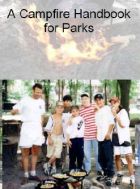
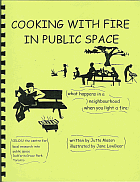
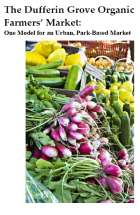
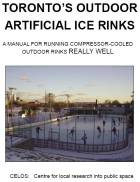
 Printer friendly version
Printer friendly version